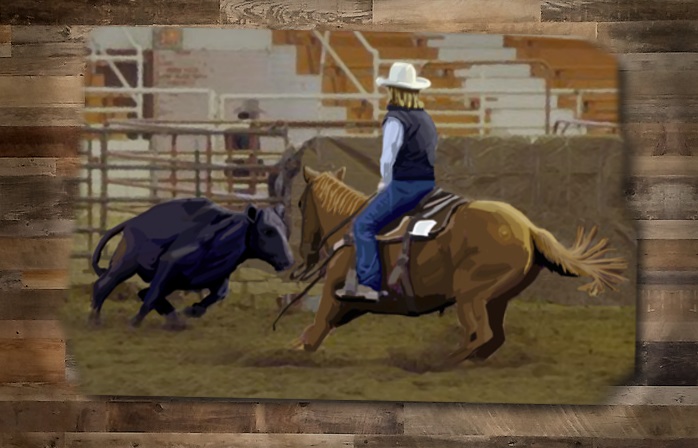Level Guidance
The levels are progressive, allowing you to lay solid foundations before advancing your horse to the next level.
Start with Foundation (Level 1 – Walk/Trot) and add traditional western skills level by level to build the classic handy ranch horse at Completeness
1/9/2020 – Please note that we have changed the recommended camera position for some tests.
GH – General Horsemanship
GH tests reflect the skills any good horse needs to learn for ranch work. Level by level, as the horse develops and gains strength, you and your horse will use these skills frequently in a ranch work setting. The GH tests are also a great addition to any western or cowboy dressage program. Horses mainly ridden for trail riding will find themselves better balanced and more agile.
RR – Ranch Reining
RR tests evaluate the skills needed to compete in the ranch reining or working cowhorse patterns. Excellent preparation for the horsemanship skills needed for ranch racing, they also condition a horse nicely for the skills needed for working equitation.
OS – Obstacle Skills
Finally, the Ranch Trail tests allow you to put the finishing touches on your handy ranch horse. Obstacles judged on horsemanship skills, fluidity and grace. The tests follow the same progression, allowing riders to build their horse’s confidence and agility. Trail riders, ranch racers, stock horse competitors will find every resource they need in these progressive tests.
Foundation (Level 1) – Horse accepts rider aids. Does not need to be “round” or “connected” continually. If a rein cue is given, the horse should respond without tossing head or resisting. Horse should respond to leg cues obediently and with confidence. Relaxation through transitions should be apparent. Read more…
Progression (Level 2) – Horse demonstrates lateral and vertical suppleness. Horse demonstrates self-carriage necessary for the movements for at least 60% of the time. Horse should be relaxed and show steady rhythm and tempo throughout the test. Horse should be soft to the aids. Read more…
Connection (Level 3) – Horse should give to aids softly and respond with alertness and obedience. Horse should accept connection and demonstrate relaxation throughout the test. The connection between horse and rider should be soft and the horse should demonstrate balance and self-carriage.
Expansion (Level 4) – Horse should maintain balance in transitions and be able to shorten and lengthen frame while maintaining a soft connection to the bit. Rhythm and relaxation should be maintained throughout the ride. Impulsion and connection at this level is progressing towards self-carriage that ultimately will help the horse maintain straightness. Read more…
Transformation (Level 5) – Horse should have smooth, balanced transitions through all gaits and respond to the lightest and softest of aids. Impulsion should be maintained during the test and the horse and rider should be in balance and harmony for at least 60% of the test. Read more…
Completeness (Level 6) – Demonstrates self-carriage throughout the test. Rider and horse should be in complete harmony and balance. Rhythm, Relaxation, Connection, Impulsion, and Straightness should be maintained at the highest level achievable according to the conformation of the horse. Read more…

Building a competitive western horse takes roughly 2 years of solid riding, 5 days a week, rain or shine. Whether or not you are able to follow that kind of training program, the RHP is on your side. Here you can show and gain valuable experience for yourself and your horse, without spending money and time chasing suitable show venues.
Read this Blog Post about why showing is valuable part of your horsemanship journey.

